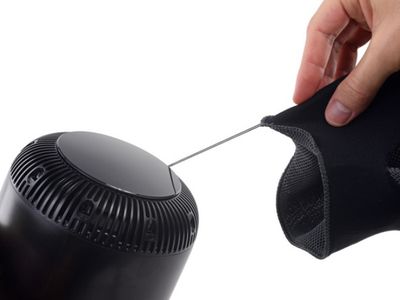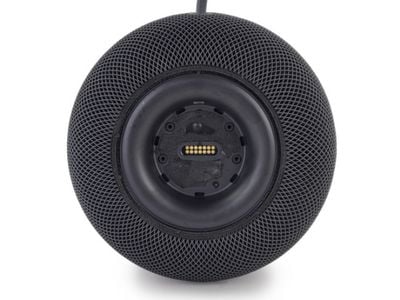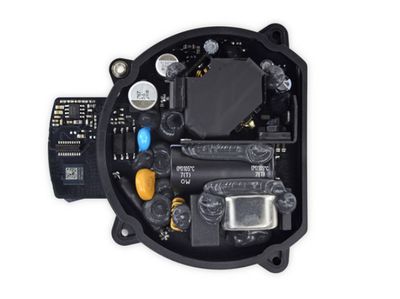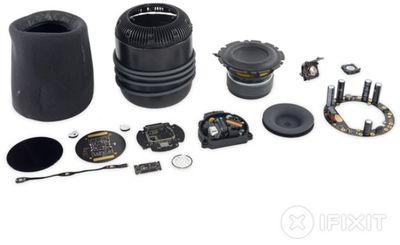iFixit has completed an exhaustive teardown of the HomePod and found that, while the speaker appears to have a simple design on the outside, it will likely be extremely difficult for customers to complete do-it-yourself repairs.

The teardown experts, who admit there might be a better way to open the HomePod that they've yet to learn, were forced to use a variety of tools to gain access to the internal components, including a heat gun, a guitar pick, a knife, and after all else failed, even a hacksaw and an ultrasonic cutter.
Underneath the rubber foot, iFixit found a hidden 14-pin connector that they speculate is probably used to test or program HomePods on pogo pins during assembly in Taiwan. Given the port sits below a layer of strong adhesive, it's unclear if it will be used for any other purpose, such as diagnostic testing.

Digging further, the team found the HomePod has an Apple A8 chip, as advertised, likely paired with 1GB of RAM layered underneath. There's also a 16GB flash storage chip from Toshiba, although users can't store songs on the speaker directly, as music must be streamed from Apple Music or an AirPlay source.
HomePod also has a two-part power supply, composed of an inner block handling the AC/DC conversion, and an outer ring distributing power to all eight of the speakers. The seven tweeters each have a conductive screw post.

In the end, the teardown concludes that the HomePod is very durable, but extremely difficult to open. This might explain why Apple is charging $279 to replace the HomePod entirely if it is damaged, unless only the power cable is damaged, in which case Apple charges a more reasonable $29 fee to have it repaired.

There's also AppleCare+ for HomePod, which adds up to two incidents of accidental damage coverage, each subject to a service fee of $39 in the United States, plus the upfront cost of the plan. But even then, it still appears that Apple is simply replacing damaged HomePods outright beyond power cable repairs.






















